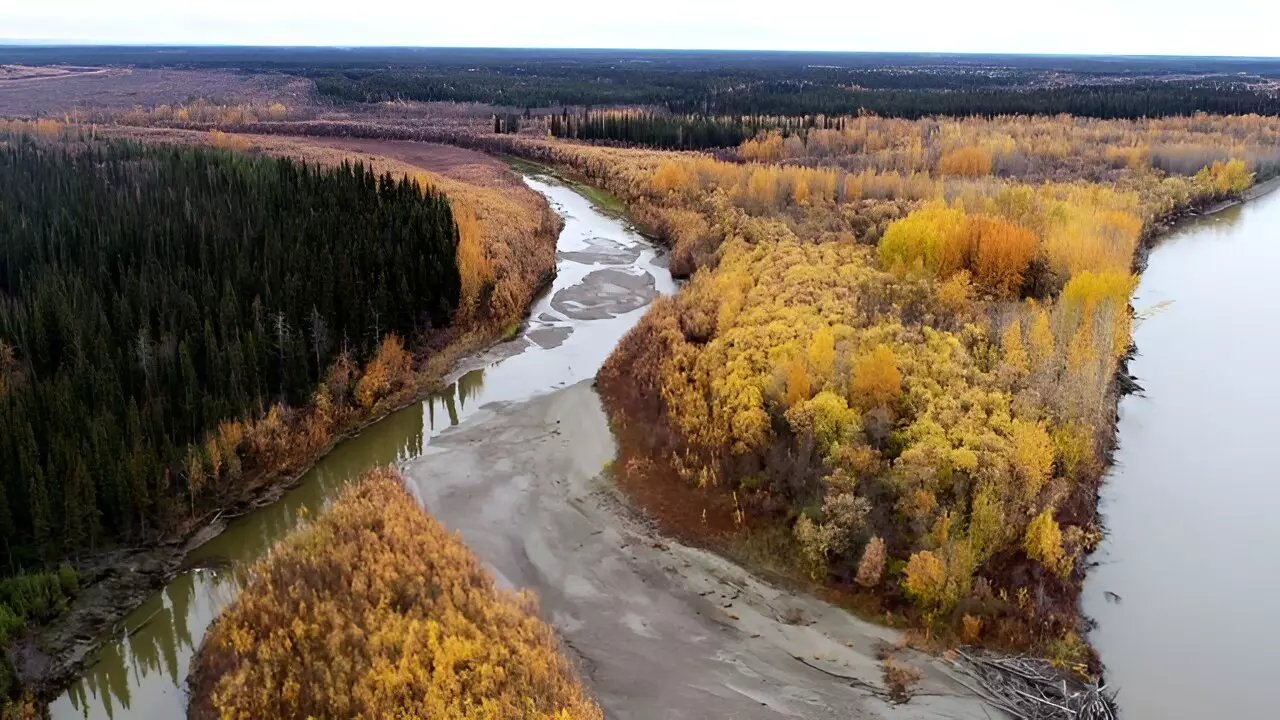As climate change accelerates at an alarming rate, the polar regions—particularly the Arctic—are undergoing drastic transformations. One ominous consequence of these changes is the potential release of mercury from melting permafrost, which serves as a time capsule for this toxic metal, safely stored for millennia. The Yukon River, flowing across Alaska toward the Bering Sea, is at the forefront of this environmental crisis, eroding permafrost and releasing hazardous mercury, which poses significant risks to both the ecosystem and human health.
The Dynamics of Mercury Accumulation
Mercury, a notoriously toxic heavy metal, enters the Arctic environment through complex atmospheric processes that carry pollutants from lower latitudes. Over years, this metal accumulates in the Arctic flora and fauna due to the unique conditions of the tundra ecosystem. Plants absorb mercury, which then enters the soil when they die and decompose, eventually becoming locked in permafrost.
As global temperatures rise, the permafrost thaws, leading to the release of mercury back into the environment. Researchers, including Josh West, a professor of Earth sciences and environmental studies at USC Dornsife, highlight the alarming fact that the concentration of mercury in Arctic permafrost could surpass the total amounts found in the oceans, soils, and atmosphere combined. This accumulation indicates that the Arctic is sitting on a potential “mercury bomb,” ready to be triggered by ongoing climate changes.
In a groundbreaking study published in **Environmental Research Letters**, a team of researchers from the USC Dornsife College of Letters, Arts and Sciences, along with allies from Caltech, the Yukon River Inter-Tribal Watershed Council, MIT, and Delft University of Technology in the Netherlands, employed advanced methodologies to analyze the mercury content in riverbank sediments. Traditional sampling methods limited to the top three meters of permafrost resulted in significant estimation variability, rendering previous assessments less reliable.
By analyzing sediments from deeper riverbank layers, researchers could derive a more precise measurement of mercury levels, confirming that sediment sampling provides a clearer picture of the potential risk. This meticulous approach also involved remote sensing data, which allowed the team to monitor the shifting course of the Yukon River and its implications on mercury erosion and deposition.
The river’s evolution is a critical factor in the mercury release cycle. As the Yukon River changes course over time, varying sediment types are eroded or deposited along its banks, which influences the mercury content in these materials. Finer sediments were found to hold more mercury than coarser materials, indicating specific soil types may represent greater risks.
According to Isabel Smith, a doctoral candidate and the study’s lead author, these findings necessitate a comprehensive understanding of both the erosion and reburial processes at play. The balance between these two processes complicates the overall assessment of the mercury threat, emphasizing the need for a broader perspective to evaluate how much mercury could ultimately enter the food chain and impact local communities.
The implications of mercury release for the approximately 5 million people residing in the Arctic regions are profound. Many communities rely heavily on hunting and fishing for sustenance, making them particularly vulnerable to bioaccumulation of mercury in fish and wildlife. While current exposure levels may not constitute an immediate health crisis, the concern is that increasing mercury contamination will escalate over time.
While drinking water sources are not immediately threatened, the potential for indirect exposure through dietary channels makes monitoring and mitigation essential. As West explains, whereas the situation does not yet mirror the catastrophic events seen in Flint, Michigan, a latent threat looms through dietary consumption of mercury-laden wildlife.
As climate change continues to reshape the Arctic, the urgency to assess and address the environmental dangers associated with melting permafrost becomes increasingly critical. The researchers involved in this study aim to create precise estimations of the lurking mercury bomb, ultimately equipping policymakers and stakeholders with the necessary tools to manage potential health risks effectively.
The path forward requires careful observation, innovative scientific approaches, and proactive policymaking that aims to mitigate the long-term effects of mercury exposure. For the residents of the Arctic, understanding and addressing these threats could determine their ecological and health futures in a rapidly changing environment. The specter of mercury, long thought safely stored beneath layers of frozen soil, is a reminder of the interconnectedness of our ecosystems and the pressing nature of the climate crisis.


Leave a Reply